6 Examples of Sustainability in the Workplace (And Their Impact)
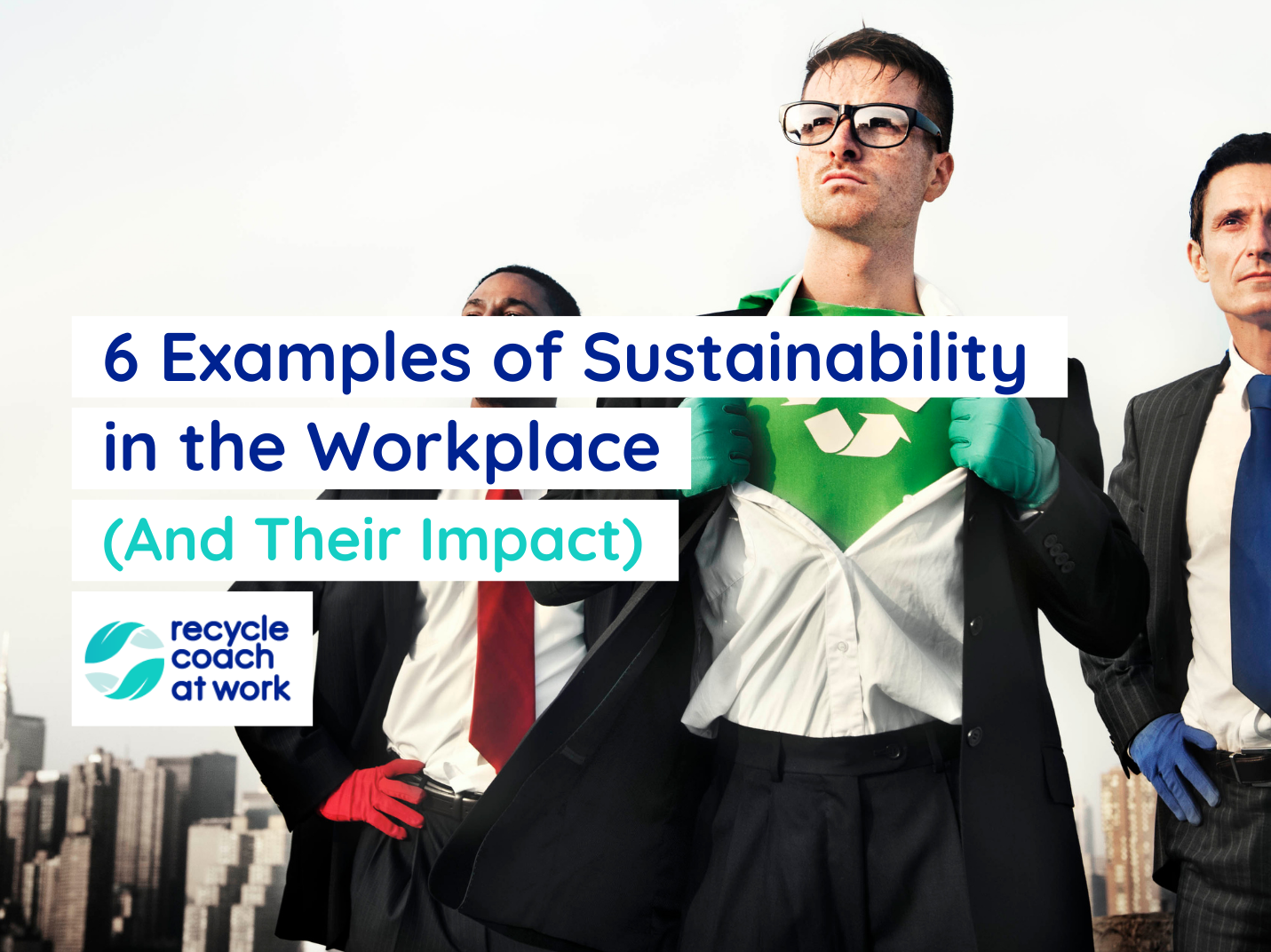
Do you need some real-world examples of sustainability in the workplace?
There are thousands of top brands who are committed to transitioning to a more sustainable way of doing business. Their eco-friendly practices will help you decide where you want to make an impact.
When it comes to sustainability in business, examples are a great place to start. Your green team will see how these industry leaders are helping employees, customers and partners go green.
With these eco-friendly brands lighting your way, you’ll develop amazing in-house practices of your own! Here are 6 outstanding examples of workplace sustainability – to get you started!
#1: Patagonia: Environmental Activism
Patagonia as a brand has always taken sustainability in the workplace seriously, with eco-friendly manufacturing, distribution and recycling practices across the board.
According to the 2019 Patagonia Sustainability Report, they have also taken steps to conduct waste audits to better understand what can be recycled and composted in their bins, among other things.
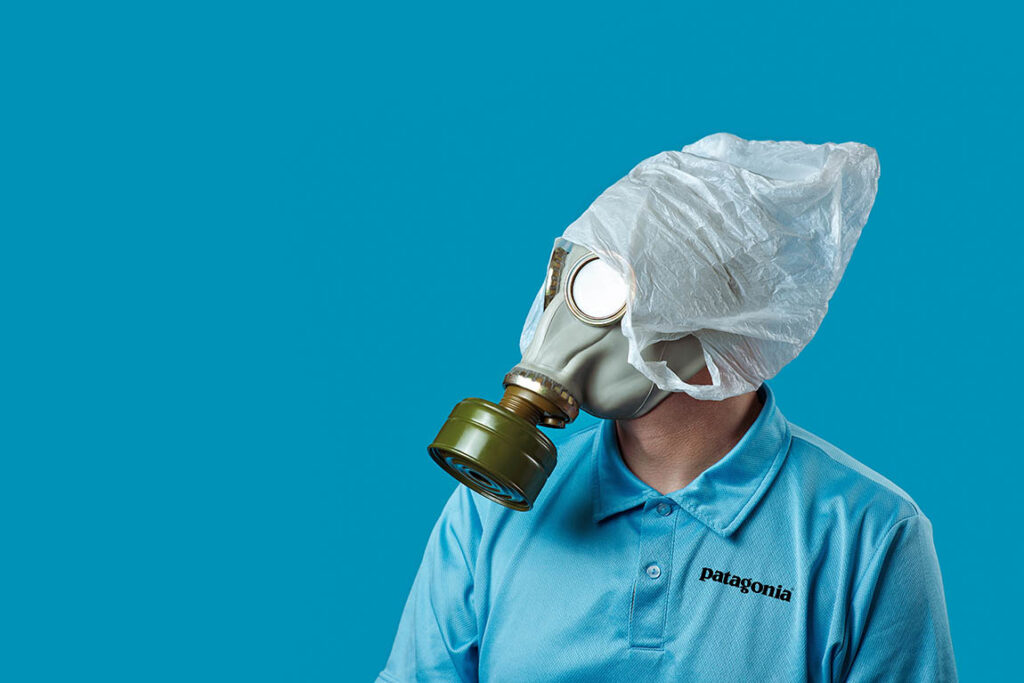
As one of the most progressive eco-friendly brands, Patagonia gives employees access to a host of opportunities as part of their “Employee Internship Program.”
From 5Km runs that support local environmental groups, to bike-to-work programs and volunteer opportunities – Patagonia allows employees to work for the good of the planet, through activism.
• Encourage your employees to raise money for environmental causes
• Consistently offer your employees opportunities to volunteer
• Have a broad range of green programs that positively benefit the earth
The Impact
While other brands struggle to retain top talent, Patagonia only has 4% employee turnover. They attribute it to allowing passionate employees to be activists for the environment – a central role and mission statement for the company. As a result, the greener they go, the larger they grow.
#2: Nike: The Lunch Program
Nike sustainable shoes are famously made from plastic bottles, and other material scraps – contributing towards their vision of a future where old materials create new shoes.
It’s clear that Nike sustainable business and innovation teams want a zero waste future. But how are Nike office workers at their Headquarters contributing to their company-wide sustainability goals?
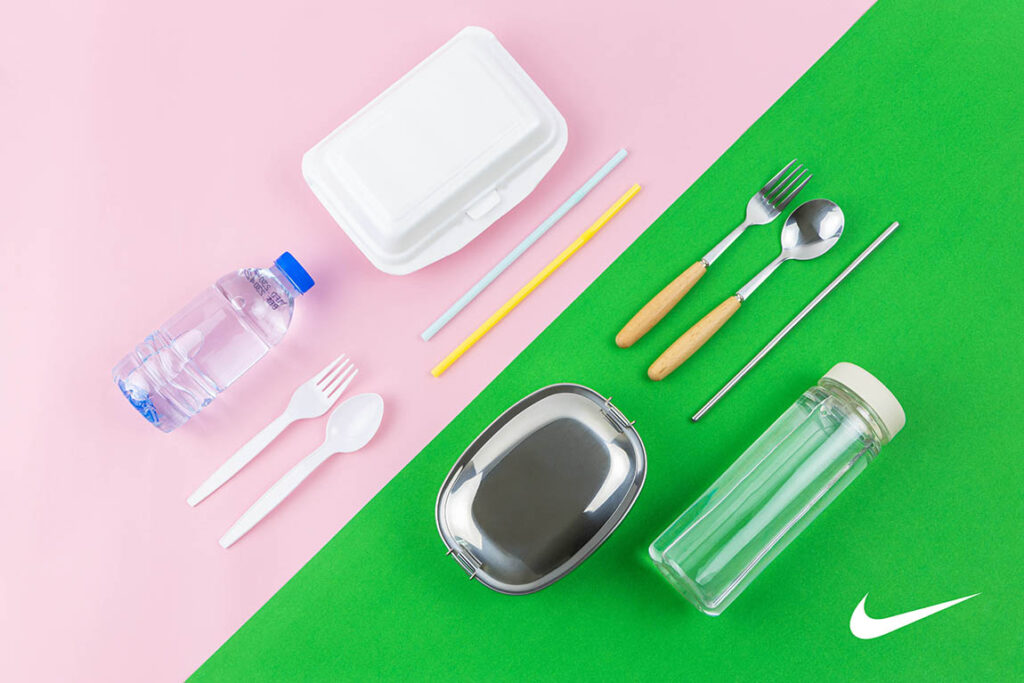
Beyond Nike sustainable products, they have internal waste management practices that change how employees work. At the World Headquarters, their “Reusable Dishware Program”prompted employees to stop buying and bringing disposable lunch containers to work.
Here are some excellent lunch program ideas for sustainability in the workplace:
• Eliminate non-recyclable coffee cups
• Host ‘plastic free lunch days’ where employees don’t bring plastic to work
• Institute a program that encourages reusable dishware to reduce waste
The Impact
With this one green program, Nike reduced single-use containers (cups and bottles) by 16,000 pounds per quarter – and waste per employee was down by 11.5% at year end.
You can read the Nike Sustainability Report here.
#3: Disney: Food Waste Energy
There are hundreds of sustainability requirements in the workplace for Disney employees, and while it’s challenging, it has helped the company achieve amazing results with their various initiatives.
These sustainable business practices include special funnel-equipped recycling cans to collect liquid waste, and collection of 20 different commodities for a 99.8% landfill waste diversion rate.

Most sustainable companies dream of a food waste recycling program this efficient! Food scraps and oils from their parks are mixed with biosolids to create biogas, which then creates electricity and fertilizer. The park is then powered according to the principles of the circular economy.
• Food waste can be converted into electricity/fertilizer for your company
• Create a highly visible food recycling program for employees and consumers
The Impact
Disney’s biogas facility produces 5.4 megawatts of heat and electricity from 120,000 tons of organic material every year. That’s enough to power about 2000 homes and contributes to decreasing Disney’s power consumption and negative environmental impact.
#4: Coca-Cola: In-House Education
Coca-Cola is deeply committed to becoming a sustainable company, and they have come a long, long way since 2007. The Coca-Cola green teams have implemented many sustainable business practices that are making a positive impact in their industry.
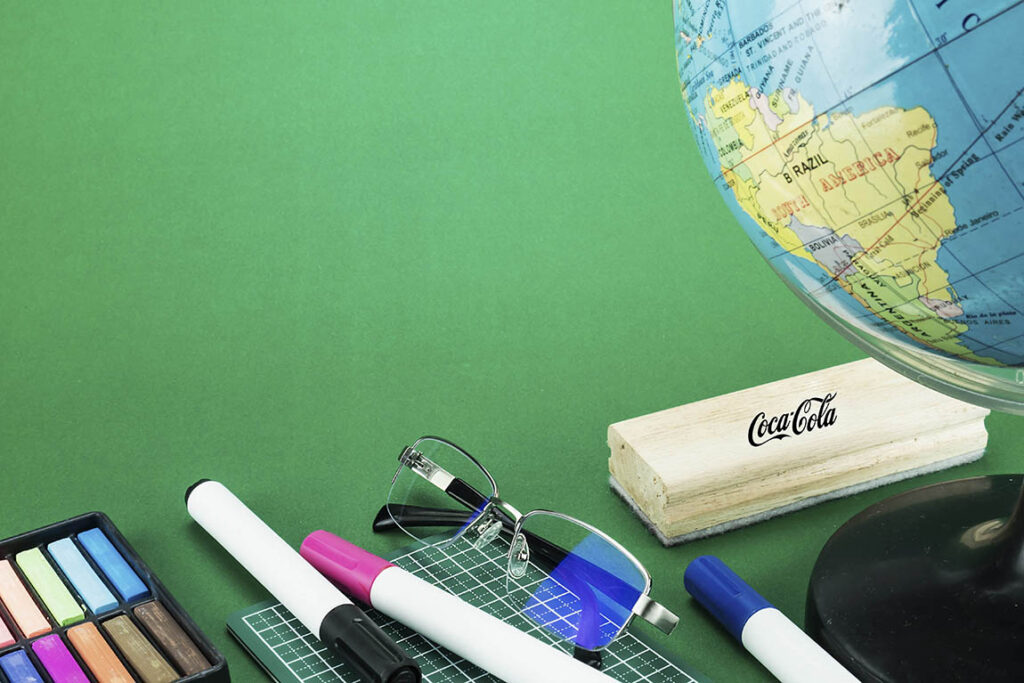
Coca-Cola’s “Do One Thing” Campaign, was an internal program used to educate employees on the sustainability initiatives going on at the brand.
The team’s main role was to spread awareness and engage employees – by getting them to share the ‘one thing they would do for sustainability’ that Earth Day.
Here are some great green initiative ideas for office employees:
• Launch an education program on Earth Day
• Find creative ways to get your employees thinking about their impact
• Promote sustainable thinking in small ways
A great way to educate your employees about recycling, is to give them access to the ‘Ask Milo’ tool, which instantly tells them if an item can or can’t be recycled. A Find My Municipality tool is also a useful resource to discover your local collection requirements.
The Impact
Most recently, Coke announced a new goal – ‘to help collect and recycle a bottle or can for every one we sell by 2030.’ They want to create a circular economy, where new materials don’t have to be used for product creation – and existing plastic is reused instead.
Coca-Cola’s “World Without Waste Program” has the company progressing towards sustainability solutions. So far, 88% of their packaging is recyclable. The real issue, they found – was that it was ending up in the environment and not being collected and recycled.
Lack of recycling education is a serious corporate concern!
The program has 3 goals – to make all Coke packaging 100% recyclable by 2025, using at least 50% recycled material in their packaging by 2030. They will collect a can or bottle for each sold. And they will work to support a healthy, debris-free environment. This starts with green practices at work.
#5: Intel: E-Waste Recycling Bins
Intel has a sustainable work culture that has consistently seen them rank among the world’s most environmentally friendly companies.
As a company, they recycle 75% of their total waste and have a plan to be zero-waste compliant by 2020. That’s ambitious, but entirely possible because of their reward program.
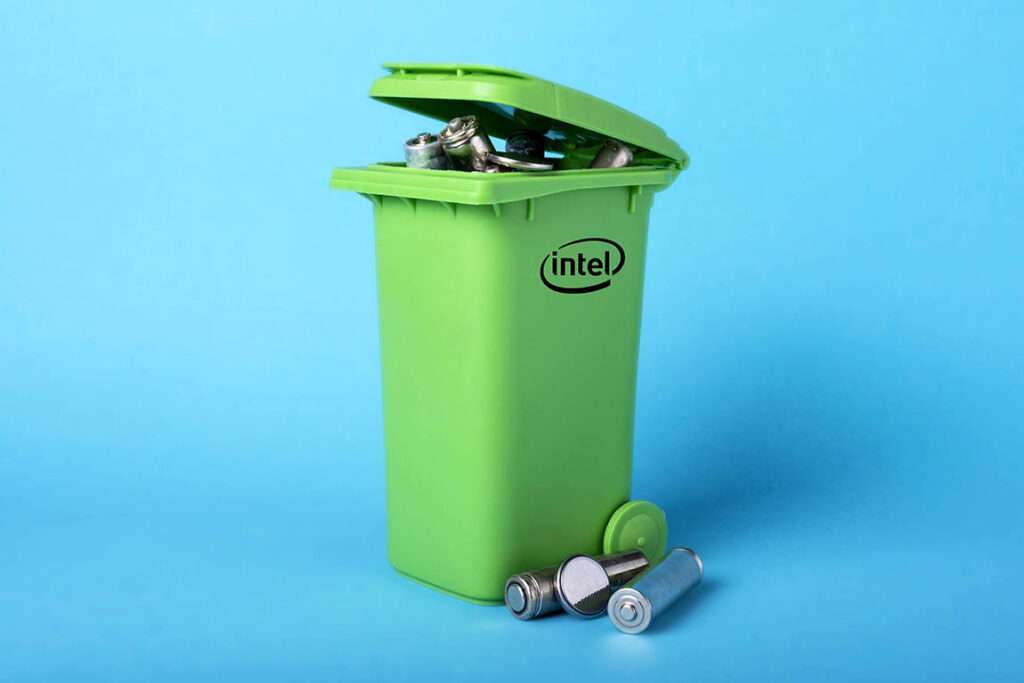
Unlike most sustainable companies, Intel links a segment of their employee’s compensation to their recycling metrics. In other words, Intel rewards employees who uphold their recycling ethos.
At their California campus for example, e-waste recycling bins make is super-easy for employees to dispose of their digital recycling.
Consider workplace sustainability ideas like these:
• Place e-waste bins in prominent areas at work, and reward employees for using them
• Give your employees individual recycling targets to achieve each month via an app
The Impact
There are a lot of sustainability activities for companies that peter out, because of lack of motivation. Intel’s highly motivated employees are contributing to their goal this year of becoming a zero waste company. When your employees win, you win.
#6: Apple: Consumer Engagement
The Apple sustainability drive has seen the brand ramp up their recycling to include customers. Spotting that the materials used to make their devices have persistent value, the company took steps to integrate this into their business model.
Now, Apple and environmental sustainability go together like peanut butter and jelly. By recycling electronics, Apple can either reuse materials or make money off the materials they can’t reuse.

The Apple sustainability strategy involves consumers in their recycling process, by making them eco-conscious and eager to participate. One tactic was to donate money for every recycled device to Conservation International.
Check out other examples of corporate sustainability initiatives from Apple here.
• In the retail niches, involve your customers in your recycling programs
• Develop ways to ‘close the loop’ on your waste materials
• Run imaginative campaigns that motivate your customers to participate
The Impact
It can take years to achieve full sustainability in business. Examples like these remind us to look to our employees, and our customers for support. Apple recently created a robot called Daisy that can take apart 200 iPhones in an hour.
They continue to encourage inventors to create new ways to access and recycle materials, so that they can close the loop and achieve total environmental efficiency.
These 6 environmental sustainability examples should give you some fantastic ideas on what your company could be doing to strengthen your green practices at work.
You may find your company smaller, and with less resources than Patagonia or Nike – and that might have been a barrier in the past. But it’s 2020, and technology has caught up.
For the first time, your company has access to tools that give you the kind of knowledge, cohesion, and practical analytics that you need to create incredible recycling results at the office.
It starts here, and it starts today – with Recycle Coach at Work.
You can’t put a price on sustainability, but you can invest where it counts. Your recycling program can be stronger, simpler and better than ever – with the right tools.
It’s time for company to be part of the solution.
Sustainability in the workplace is about finding what suits your employees and customers, then designing the programs that will help your green team create a zero waste future for your company.
Which of these sustainability ideas did you find most interesting? Let’s chat below.
7 Comments
Comments are closed.
Eli Richardson
May 19, 2021 at 10:56 amI’m glad you talked about how companies could help reduce their environmental impact. In my opinion, we need to start caring more about our world’s health. If I were to own a company, I would make sure that we’re doing everything we can to recycle and re-use materials. I appreciate your information on how businesses could make a difference through recycling strategies.
April
May 31, 2021 at 11:48 amThanks for the positive comment! Let’s keep working to bring more of these strategies to our local workplaces!
April
May 31, 2021 at 11:49 amWe’re glad it helped and we’re glad you’re planning to use some of these ideas in your business!
Maranzu Bright
July 31, 2021 at 5:49 amI find the Disney: food waste energy initiative interesting making biogas(electricity) and fertilizer for agriculture(farming) from waste. I am walking to the path of starting a company that convert waste(animal, plant, food etc) into useful substance in my country(Nigeria)
Sanchit Gaurav
October 20, 2021 at 4:16 amYou don’t have to solve your company’s entire sustainability journey overnight, implementing small changes where you can and using smart technology can add up to have a large and measurable impact on your overall output.
Cameron Dinnie
January 13, 2022 at 8:42 amThanks for the feedback.
Do you know of any Sustainability Employee Rewards Programmes that our out there? I believe its a great way to incentivize sustainable practices and include employee’s personal sustainable development – not just internal sustainable events that the company runs with but together with what employees are personally doing to foster sustainable practices and make it known to the world.
April
January 13, 2022 at 10:55 amPersonal tracking of sustainable practices would be a great motivator for employees!